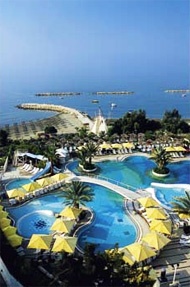 |
 |
|
Nose Surgery
Anesthetic: general aneshetic Duration of the procedure: 1-2 hours
What should I expect during the post-operative period? Whether the procedure is done under general or local anesthesia, it is usually possible to go home on the day of surgery. During the first few days your face will feel and look swollen and you will have some pain. Take pain medicine as prescribed by your doctor. Except for going to the bathroom, stay in bed with your head elevated or in a comfortable chair for the first day or two. In the first two days it is also a good idea to avoid hot baths or showers and also hot food or liquids. Heat dilates the blood vessels inside the nose and can increase congestion and may cause bleeding. Bruising around the eyes increases for two to three days and then begins to subside. Using a cold compress will help during this time. A certain amount of blood tinged mucus discharge is normal. Persistent fresh blood should be reported to dr. David. If you have nasal packing it will be removed within the first few days. Even after the packing is removed you will continue to have some nasal congestion but you should not blow your nose during the first week. Within three or four days you should be able to start a gradual return to normal activities and be back at work or school within a week to ten days. At about this time the external splints will have been removed. Strenuous activity such as jogging, swimming or other vigorous exercising should be avoided for at least two weeks. Even after the splint is removed the nasal bones are not stable or completely healed for a few more weeks so do not bump your nose! Complete healing and final results of the surgery take a long time. All the noticeable swelling and bruising will be gone within two weeks but the skin on your nose will be sensitive for several months and sun block should be used. There may also be some numbness and slight congestion for several months. What are the risks and complications of this procedure? Every surgical procedure involves a certain amount of risk and it is important that you understand the risks involved with noseplasty. Although the majority of patients do not experience the following complications, you should understand all possible consequences of nose surgery. The risks include:
Fortunately, major complications from nose surgery are uncommon. Every year, thousands of patients undergo nose surgery and experience no significant problems |
||
 |
 |


